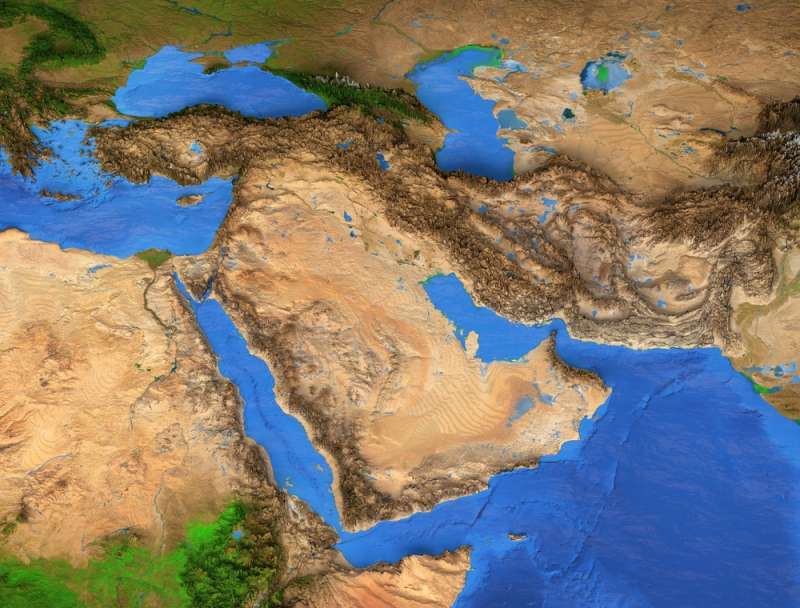Latest News
- GTD Cracks Down On Vehicle Noise Pollution In Sulaibiya
- Mystery Of Dead Fish At Shuwaikh Beach Sparks Urgent Action
- MEW To Complete Links With The Interior And Justice Ministries B...
- 8 Expats Jailed For Bribing An Officer To Obtain Driver's Licens...
- Weekend Weather Is Expected To Be Hot
- From Tomorrow, Traffic Diversion On Third Ring Road
- Ministry Of Health Refute Rumors On Non-availability Of Antibiot...
- Amir Of Kuwait And Jordan King Renew Commitment To Regional Secu...
- 37 Arrested With Narcotics And Firearms
- Outrage Over Candidate's Arrest
- Six Stores Shut Down In Jahra For Selling Fake Goods
- Peddlers Caught With Drug Pills And Crystal Meth
Water Demand In The Gulf Will Increase 62% By 2025

In the face of high population growth, increasing urbanization, and accelerating industrial expansion, the Middle East and North Africa (MENA) region is experiencing a long-term structural increase in demand for water and wastewater services.
An exclusive report from MEED, in partnership with Orascom, reveals how the increasing demand for water is driving investment in water and sanitation infrastructure in a region characterized by a lack of rivers, lakes and rain. Water security has always been a priority, but the pandemic has refocused Middle Eastern countries on the vital importance for sustainable water supply.
In the Gulf Cooperation Council, water demand is expected to increase by about 62 percent by 2025, according to data from regional project tracker Med Projects.
Demand growth on this scale requires significant investments in new capabilities and services. Such an investment takes place. According to MEED Projects, about $120.3 billion of water and wastewater projects are under planning or underway across the region, of which about $89.6 billion are in the GCC.
Saudi Arabia and Egypt, the region’s two largest markets for desalination projects, are presenting ambitious plans for private water financing. In Egypt, the most populous country in the region, the population could rise to 128 million by 2030 based on current growth rates, compared to about 100 million today, placing huge demand on already stretched water resources.
In 2018, the per capita water supply in Egypt was 570 cubic metres. This is expected to drop to around 500 cm/year by 2025 and is the reason behind Egypt’s ambitious $50.3 billion National Water Management Plan, announced in 2018.
Governments support large-scale strategic investment programs to increase water production and storage capacities, expand wastewater and wastewater treatment capacity, and modernize dilapidated water transmission and distribution networks.
At the same time that they are investing in increasing capacity, they are also focusing their efforts on preserving their water resources and managing consumption levels. In addition to cutting subsidies, governments are introducing new technologies, from large-scale reverse osmosis desalination, to smart grids and metering.
Managing consumption, increasing asset efficiency, recycling wastewater, using treated wastewater and reducing leakage are now just as important as building new desalination and wastewater treatment plants.
Unlike a decade or two ago, when Independent Water and Power Projects (IWPP) was the norm, water separation from energy production has become a major topic for the water sector in the Middle East and will become increasingly important. There are also opportunities to upgrade existing facilities, such as retrofitting multi-stage flash (MSF) desalination plants with membrane reverse osmosis techniques.
Governments are accelerating efforts to increase private sector participation in the water and sanitation sectors through public-private partnerships and privatization. The need to maintain capital in a low oil price environment will lead to privately developed schemes becoming the standard model for future capacity purchases. The PPP model has already been established in the desalination sector, and is becoming increasingly important in wastewater treatment, transport and storage
SOURCE : KUWAIT OFFERINGIS
Trending News
-
 Kuwait Implements Home Biometrics Services Ahead O...
14 April 2024
Kuwait Implements Home Biometrics Services Ahead O...
14 April 2024 -
 Kuwait Airways Provides Update On Flight Schedule...
14 April 2024
Kuwait Airways Provides Update On Flight Schedule...
14 April 2024 -
 Kuwait Airways Introduces Convenient Home Luggage...
15 April 2024
Kuwait Airways Introduces Convenient Home Luggage...
15 April 2024 -
 Expat Residency Law Amended By Kuwait Ministerial...
20 April 2024
Expat Residency Law Amended By Kuwait Ministerial...
20 April 2024 -
 Gathering For Eid Al-Fitr Prayers: Kuwaiti Citizen...
10 April 2024
Gathering For Eid Al-Fitr Prayers: Kuwaiti Citizen...
10 April 2024 -
 Two Expats Are Arrested For Stealing From Salmiya...
17 April 2024
Two Expats Are Arrested For Stealing From Salmiya...
17 April 2024 -
 An Egyptian Expat Dies At Kuwait's Airport
11 April 2024
An Egyptian Expat Dies At Kuwait's Airport
11 April 2024 -
 Kuwait Airways Resumes Flights To Beirut And Oman...
15 April 2024
Kuwait Airways Resumes Flights To Beirut And Oman...
15 April 2024 -
 Bay Zero Water Park Kuwait: Summer Season Opens Ei...
11 April 2024
Bay Zero Water Park Kuwait: Summer Season Opens Ei...
11 April 2024 -
 Temperature Increases Cause Electricity Load Index...
21 April 2024
Temperature Increases Cause Electricity Load Index...
21 April 2024












Comments Post Comment